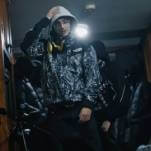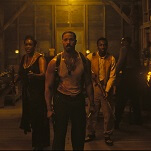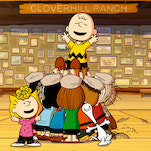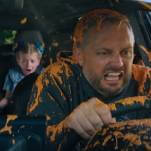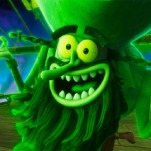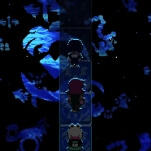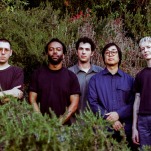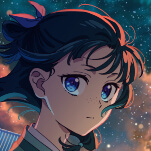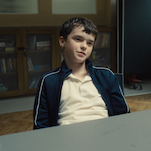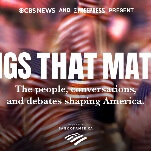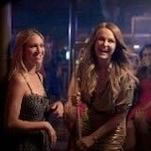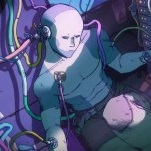Jim Starlin’s Warlock sets the standard for cosmic comics
Superhero comic books descend from the pulps. That is, they are a product of a massive surge in genre fiction produced in the early decades of the 20th century. Look at your favorite superheroes today, and you can still see the traces of this lineage. It’s not as if fantasy, science-fiction, or detective stories hadn’t existed before 1900, but so many of the expectations and conventions that genre fans take for granted today were only created and codified after the turn of the century. Many of the people who got in on the ground floor of the Golden Age of comics had experience with pulp magazines like Amazing Stories and Weird Tales as writers, editors, or devoted fans.
Edgar Rice Burroughs began his Barsoom series in 1912, with the serialization of “Under The Moons Of Mars.” These books, detailing the adventures of an Earth man named John Carter stranded on Mars and swept up in a series of wars and adventures, was one of the first examples of what would later be known as “planetary romance”—a subgenre of sci-fi adventure stories. If the name John Carter sounds familiar, it was also the name of a box-office bomb released two years ago, ostensibly to celebrate the 100th anniversary of the character’s creation. The fact that so many viewers and reviewers criticized the film for being a predictable retread was actually, oddly enough, something of a tribute to the enduring strength of the source material: Burrough’s books have been so thoroughly ransacked by succeeding generations, for everything from Flash Gordon to Buck Rogers to Star Wars, that any faithful adaptation was bound to seem at least a little familiar.
Despite the trappings of rocket ships (or light-speed engines, or space folding), there’s always been a vein of fantasy at the heart of planetary romance that sets it apart from the realms of so-called “hard” sci-fi. Hard sci-fi limits itself—or at least tries to limit itself, for the most part, although it’s a rare writer who doesn’t admit to cheating occasionally—to stories that can be told with reasonable extrapolations of current scientific understanding. It’s usually fairly easy to tell the difference between hard and soft sci-fi: Does the story have any kind of faster-than-light travel? Although scientists love to formulate theories (and popular science writing is full of ideas) as to how, maybe, somehow, under certain circumstances, by fudging some data, faster-than-light travel might be remotely possible, the current consensus is that physically traveling between star systems at warp-speed velocity is impossible. Whatever sci-fi trappings a writer might put on it, FTL-travel is pure fantasy, at least for the moment.
So there’s a conflict in the genre, and this conflict is borne out to this day in movies like the aforementioned Star Wars—supposedly sci-fi, but as much fantasy as anything else, complete with godlike wizards and epic sword fights straight out of Thomas Malory. Why is this fine distinction so important? It’s necessary to understand what we mean when we call something “cosmic”: We’re often (but not always) talking about some kind of hybrid genre, something that draws equally from the worlds of both sci-fi and fantasy, something descended in some way from the planetary romance genre, something at least ostensibly an adventure story (even if the definition of adventure can be slippery). 2001: A Space Odyssey is a great example. Much of the story is predicated on things that are at least theoretically feasible with existing science, except for the parts that aren’t, and the parts that aren’t might as well be pure sorcery. (It’s a quest narrative, too, even if no one fires a gun or draws a sword for the entire running time.)
Cosmic doesn’t even have to be sci-fi at all, even if much of what we identify as cosmic is—Dr. Strange is a character of pure fantasy, and yet he has no problems gallivanting around a recognizable universe of distant stars and galaxies. Neil Gaiman’s Sandman is another fantasy character who indulges in the occasional bit of cosmic adventure. H.P. Lovecraft’s horror fiction dwelt in the margins between fantasy and sci-fi, creating a cosmology of interstellar entities and alien races that was also fueled by dark magic and necromancy.
All of which is to say, when we talk about “cosmic,” we’re talking about a lot of different things, but mostly we’re talking about fantasy adventures that take place in a roughly sci-fi universe. But because the genre boundaries are especially porous, there’s a lot of slippage, and in fact, this slippage is often where the most interesting types of stories originate.
Jim Starlin’s Warlock is perhaps the best cosmic story ever told in comics. This may be a controversial opinion, but it’s not entirely without some basis in consensus, either. Warlock is a character with a unique pedigree. He was originally created by Stan Lee and Jack Kirby in the pages of Fantastic Four in 1967, a scientific experiment by a group of unscrupulous scientists trying to create a “perfect” human. As could probably be expected, that didn’t go so well, and the creature—originally titled, simply, “Him”—rebelled against his masters. In his first appearances, the character was a naïve child, just born and already incredibly powerful. He next appeared in a slugfest with Thor, precipitated when Him tried to mate with Thor’s girlfriend for the purpose of propagating a race of perfect children. After this fails he sets out for the stars to seek his destiny.
It’s at this point that the story gets interesting. Him, while technically a Lee and Kirby creation—with all that pedigree entails—faded from sight very early after his premiere. In conception he was closer to Kirby’s original ideal of the Silver Surfer, an artificial man created by Galactus and completely unfamiliar with human life (as opposed to Lee’s subsequent reinvention of the Surfer as a man named Norrin Radd who had sacrificed himself and his conscience to save his home planet of Zenn-La). The problem is that, as given, Him wasn’t a particularly interesting character. There were only so many stories that could be told about a godlike child wandering around the universe getting into misunderstandings. Roy Thomas plucked Him out of obscurity in 1972 to relaunch the character, along with Gil Kane, as Adam Warlock. Thomas, equally influenced by late-’60s touchstone Jesus Christ Superstar and Jack Kirby’s early-’70s Fourth World saga, consciously recast Warlock as a messiah figure, sent by his adopted father, the High Evolutionary, to watch over the progress of Counter-Earth, a planet-sized biological experiment constructed by the Evolutionary on the far side of the sun from the real Earth. Eventually a demonic villain arose, The Man-Wolf, who threatened to destroy Counter-Earth, before Warlock sacrificed himself to save the planet. He rose three days later, with a little help from the Hulk—certainly the oddest apostle.
Before Jim Starlin, Warlock was already a distinctive character, and Thomas’ run (aided by writers Mike Friedrich and later Gerry Conway, who fleshed out Thomas’ template) is worthy of remembrance in its own right. But it’s when Starlin enters the picture in 1975 that the character fully comes into his own. Even Thomas admits in his 2006 introduction to a collected edition of his Warlock stories that Starlin’s Warlock was “perhaps the most ‘cosmic’ series in the history of comic books.” If Thomas’ religious allegory had already stretched the limits of possibility in superhero comics of the early ’70s, Starlin’s run would push the genre almost to its breaking point.

